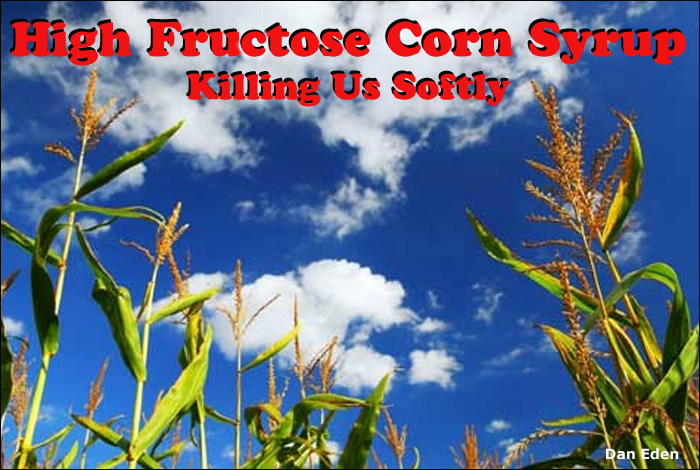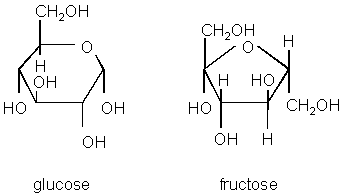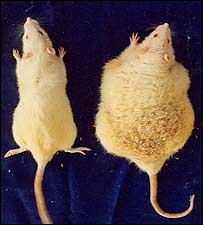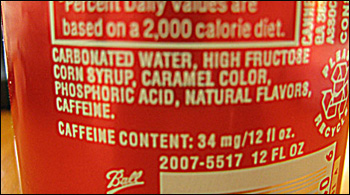Paste the link if you don't receive the images.
http://www.viewzone.com/highfructose.html
And this article;
Child Obesity in America: "Mommy, Mommy! Why Am I Fat?"
http://www.globalresearch.ca/index.php?context=va&aid=18345
Be Well.
David

 Early in human civilization, the limited diets of local farming and food production were supplemented by food specialists who imported things like spices, grains and sugar, making our consumption of food more interesting and varied. Farmers and fishermen sold their products in local markets, making it easier for the average human to obtain and eat a well balanced and varied diet. Consumers had always trusted that their food supply was healthy.
Early in human civilization, the limited diets of local farming and food production were supplemented by food specialists who imported things like spices, grains and sugar, making our consumption of food more interesting and varied. Farmers and fishermen sold their products in local markets, making it easier for the average human to obtain and eat a well balanced and varied diet. Consumers had always trusted that their food supply was healthy.
But something has changed.
High Fructose Corn Syrup -- killing you softly
 Have you had a soft drink today? How about a candy bar, a stick of gum or some fruit juice. These are just the most obvious foods that contain high fructose corn syrup or HFCS. It's in just about everything that's sweet and things you don't normally think of as sweet. Things like bread, cereal, coffee creamer, ketchup and salad dressing all contain High Frustose Corn Syrup. It's now implicated as the main source of obesity, high blood pressure, elevated triglycerides and diabetes -- conditions that cause mysery and death around the globe.
Have you had a soft drink today? How about a candy bar, a stick of gum or some fruit juice. These are just the most obvious foods that contain high fructose corn syrup or HFCS. It's in just about everything that's sweet and things you don't normally think of as sweet. Things like bread, cereal, coffee creamer, ketchup and salad dressing all contain High Frustose Corn Syrup. It's now implicated as the main source of obesity, high blood pressure, elevated triglycerides and diabetes -- conditions that cause mysery and death around the globe.
The Greed
HFCS is a useful ingredient because it's sweet and saves the food producers money. Real sugar is very expensive because of sugar tariffs and import quotas. Even with all the chemistry and processing, HFCS is still the cheapest way to sweeten food. It's also said to extend the shelf-life of products and is much easier to mix in food because it's a liquid. Over the past 40 years, as methods for producing HFCS improved, food and beverage companies have replaced all other sweeteners with HFCS.
What is HFCS?
HFCS is not natural. It's manufactured from cornstarch, using a process developed in Japan in 1971. HFCS is made up of glucose and fructose molecules, unlinked. The most common form in the American food supply is HFCS-55, which contains 55% fructose and 45% glucose. The fact that the fructose and glucose molecules are not linked is very significant and we'll discuss that later.
Fructose, the main ingredient of HFCS, is the villain in this story.
Fructose is a simple sugar normally found in fresh fruits and vegetables. Fuctose is unique in that it does not require the body to make insulin in order to use it as fuel. Ingesting fructose doesn't produce that "sugar rush" you get when the body is pumping insulin to the bloodstream to digest other sugars, like glucose. This "rush" is connected with your feeling of "satisfaction" or "fullness," so after ingesting fructose you may not feel satisfied -- even though your caloric intake is the same as other sugars. This causes you to consume more.
If you received your fructose only from vegetables and fruits (where it originates) as most people did a century ago, you'd consume about 15 grams per day -- a far cry from the 73 - 100 grams per day the typical adolescent gets from drinking HFCS sweetened soft drinks. In vegetables and fruits, it's mixed in with fiber, vitamins, minerals, enzymes, and beneficial phytonutrients, all which moderate the negative metabolic effects.
Food manufacturers often compare the calorie of HFCS to normal table sugar. A teaspoon of both HFCS and table sugar is only 16 calories. Even accounting for the elevated consumption of fructose in HFCS, the increase in calories is not that significant. 15 grams of fructose (1 tablespoon) contains about 16 calories. 100 grams of fructose (6 tablespoons) contains about 105 calories. This seems hardly enough calories to cause a health problem, yet research confirms the problems are very real.

For years scientists and nutritionists have been warning that more studies needed to be done to determine the complex metabolism of how our livers process and deal with fructose. While the exact biological process remains unknown, studies continue to link HFCS with many unhealthy global epidemics.
2010: The Princeton Study reveals the terrible truth
A Princeton University research team has demonstrated that all sweeteners are not equal when it comes to weight gain: Rats with access to high-fructose corn syrup gained significantly more weight than those with access to table sugar, even when their overall caloric intake was the same.
In addition to causing significant weight gain in lab animals, long-term consumption of high-fructose corn syrup also led to abnormal increases in body fat, especially in the abdomen, and a rise in circulating blood fats called triglycerides. The researchers say the work sheds light on the factors contributing to obesity trends in the United States.
When rats are drinking high-fructose corn syrup at levels well below those in soda pop, they're becoming obese -- every single one, across the board.
 The Princeton Experiment The Princeton ExperimentThe first study showed that male rats given water sweetened with high-fructose corn syrup in addition to a standard diet of rat chow gained much more weight than male rats that received water sweetened with table sugar, or sucrose, in conjunction with the standard diet. The concentration of sugar in the sucrose solution was the same as is found in some commercial soft drinks, while the high-fructose corn syrup solution was half as concentrated as most sodas. The second experiment -- the first long-term study of the effects of high-fructose corn syrup consumption on obesity in lab animals -- monitored weight gain, body fat and triglyceride levels in rats with access to high-fructose corn syrup over a period of six months. Compared to animals eating only rat chow, rats on a diet rich in high-fructose corn syrup showed characteristic signs of a dangerous condition known in humans as the metabolic syndrome, including abnormal weight gain, significant increases in circulating triglycerides and augmented fat deposition, especially visceral fat around the belly. Male rats in particular ballooned in size: Animals with access to high-fructose corn syrup gained 48 percent more weight than those eating a normal diet. In humans, this would be equivalent to a 200-pound man gaining 96 pounds! |
"When rats are drinking high-fructose corn syrup at levels well below those in soda pop, they're becoming obese -- every single one, across the board. Even when rats are fed a high-fat diet, you don't see this; they don't all gain extra weight."
"These rats aren't just getting fat; they're demonstrating characteristics of obesity, including substantial increases in abdominal fat and circulating triglycerides," said Princeton graduate student Miriam Bocarsly. "In humans, these same characteristics are known risk factors for high blood pressure, coronary artery disease, cancer and diabetes."
The Princeton researchers note that they do not know yet why high-fructose corn syrup fed to rats in their study generated more triglycerides, and more body fat that resulted in obesity.
[Results published online March 18 by the journal Pharmacology, Biochemistry and Behavior.]
Unusual metabolism of HFCS
Discoveries about the unusual metabolism of HFCS were announced in a report published in the Archives of Internal Medicine by Julie Palmer and her colleagues at Boston University. This study showed that fructose metabolized differently from glucose, common table sugar.
"The public should be made aware that these drinks are not a healthy alternative to soft drinks with regard to risk of type 2 diabetes..."
 The findings came from an assessment of 44,000 black women in the United States who were checked from 1995 through 2005. Those who said they drank two or more non-diet soft drinks (sweetened with HFCS) a day had a 24 percent increased risk for developing type 2 diabetes than those in the study who drank fewer than one regular soft drink per month, the research team said.
The findings came from an assessment of 44,000 black women in the United States who were checked from 1995 through 2005. Those who said they drank two or more non-diet soft drinks (sweetened with HFCS) a day had a 24 percent increased risk for developing type 2 diabetes than those in the study who drank fewer than one regular soft drink per month, the research team said.Women who drank two or more sweetened (HFCS) fruit drinks per day had a 31 percent increased risk compared to those who drank fewer than one such fruit drink a month. Diet soft drinks, grapefruit juice and orange juice (which contain no HFCS) were not linked to a higher diabetes risk.
While pure orange and grapefruit juices also contain natural sugars, including fructose, they may have a different metabolic effect or may be more likely to be consumed as part of a meal, the investigators said.
A related study found that a low-fat diet does not seem to change the risk of diabetes. Thus becoming obese and becoming diabetic does not seem to be linked purely to weight gain from fat, but rather from the obesity specifically induced by the HFCS.
"The common denominator that appears clear is that calories trump everything. And certain nutrients, like high fructose corn syrup, make it easier to overeat.If you keep the calories low, you can probably eat almost anything, which is what the low-carb diets show us. Specific metabolic issues aside, an important reason that low carb works is because you don't eat a lot of calories." -- Dr. Mark Feinglos of the Duke University Medical Center in North Carolina.
So, what's so different about HFCS?
Natural sources of fructose include fruits, some vegetables, honey, sugar cane and sugar beets. In a normal diet, fructose would only be ingested in these natural forms. It would remain a relatively low source of sugar. Today, the inclusion of fructose in virtually every food product dramatically increases the proportion of fructose in our diet.
For many years, Dr. Meira Fields and her coworkers at the US Department of Agriculture investigated the harmful effects of dietary sugar on rats. They discovered that when male rats are fed a diet deficient in copper, with sucrose as the carbohydrate, they develop severe pathologies of vital organs. Liver, heart and testes exhibit extreme swelling, while the pancreas atrophies, invariably leading to death of the rats before maturity. Sucrose is a disaccharide composed of 50 percent glucose and 50 percent fructose. Dr. Fields repeated her experiments to determine whether it was the glucose or fructose moiety that caused the harmful effects. Starch breaks down into glucose when digested. On a copper-deficient diet, the male rats showed some signs of copper deficiency, but not the gross abnormalities of vital organs that occur in rats on the sucrose diet. When the rats were fed fructose, the fatal organ abnormalities occured.
Pure fructose contains no enzymes, vitamins or minerals and robs the body of its micronutrient treasures in order to assimilate itself for physiological use.
 While naturally occurring sugars, as well as sucrose, contain fructose bound to other sugars, high fructose corn syrup contains a good deal of "free" or unbound fructose. Research indicates that this free fructose interferes with the heart's use of key minerals like magnesium, copper and chromium. Among other consequences, HFCS has been implicated in elevated blood cholesterol levels and the creation of blood clots. It has been found to inhibit the action of white blood cells so that they are unable to defend the body against harmful foreign invaders.
While naturally occurring sugars, as well as sucrose, contain fructose bound to other sugars, high fructose corn syrup contains a good deal of "free" or unbound fructose. Research indicates that this free fructose interferes with the heart's use of key minerals like magnesium, copper and chromium. Among other consequences, HFCS has been implicated in elevated blood cholesterol levels and the creation of blood clots. It has been found to inhibit the action of white blood cells so that they are unable to defend the body against harmful foreign invaders.
In studies with rats, fructose consistently produces higher kidney calcium concentrations than glucose. Fructose generally induces greater urinary concentrations of phosphorus and magnesium and lowered urinary pH compared with glucose.
In humans, fructose feeding leads to mineral losses, especially higher fecal excretions of iron and magnesium, than did subjects fed sucrose. Iron, magnesium, calcium, and zinc balances tended to be more negative during the fructose-feeding period as compared to balances during the sucrose-feeding period.
According to a recent article in the American Journal for Clinical Nutrition, high fructose corn syrup (HFCS) is the likely culprit for the obesity epidemic in America, type 2 diabetes, cardiovascular disease and breast cancer.
How much HFCS do we eat?
The average American consumes about 28.4 kg (62.48 pounds) of HFCS annually, versus 26.7 kg (58.74 pounds) of sucrose (common table type) sugar. Surprisingly many other countries have quite a sweet tooth! Sucrose consumption per person is higher than the USA in the following examples (note also the diabetes rates):
* USA: 26.7 kg, 58.74 lbs. -- diabetes rate 7.8%
* EU: 40.1 kg, 88.2 lbs. -- diabetes rate 7.0%
* Brazil: 59.7 kg, 131.34 lbs. -- diabetes rate 15.7%
* Australia: 56.2 kg, 123.64 lbs. -- diabetes rate 8%
American Indians hit hard with diabetes
According to government health officials, not only do the American Indian and Alaska Native populations suffer have the highest diabetes rates among ethnic groups, but the disease is increasing in the young American Indian population.
Native American Indians have lived an ethnically isolated existence for tens of thousands of years. They have survived and evolved in a natural environment, free from processed and chemically altered food. As such, Native American Indians represent an example of a human anatomy in harmony with what is healthy and nutritious. European vices, such as alcohol and sugar, have a dramatic effect on these people and so demonstrate the dangerous and unhealthy aspects of our modern diet.

"In some communities, the prevalence rate [of diabetes] is as high as 60 percent among adults," Charles Grim, the head of the Indian Health Service, told the Senate Indian Affairs Committee.
Diabetes increased 128 percent among teens ages 15 to 19 between 1990 and 2004. The disease increased 77 percent among young people younger than 15 during the same time frame.
Another possible hint at culture or diet as a factor can be seen in the statistics for culturally diverse New York City. According to the city's health commisioner, Dr. Yhomas R. Frieden, in the city 12.2 percent of Hispanics have diabetes, as do 10.8 percent of non-Hispanic blacks. Whites who are not Hispanic have the lowest rate -- 5 percent -- and Asians are second to last, with 6.8 percent. The Bronx leads the city in diabetics, with 11.5 percent of residents having the illness, while 4.6 percent of Staten Island residents have it.
Ignoring the facts
While the exact physiology of the link to diabetes has yet to be understood, several human and animal studies confirm that high levels of fructose, as found in HFCS, can be deadly. Beverage and food manufacturers don't care about these studies because the causal link is not there to make them culpable. They continue to reap the profits and claim that HFCS is totally safe.
In the 40 years since the introduction of high-fructose corn syrup as a cost-effective sweetener in the American diet, rates of obesity in the U.S. have skyrocketed, according to the Centers for Disease Control and Prevention. In 1970, around 15 percent of the U.S. population met the definition for obesity; today, roughly one-third of the American adults are considered obese, the CDC reported. High-fructose corn syrup is found in a wide range of foods and beverages, including fruit juice, soda, cereal, bread, yogurt, ketchup and mayonnaise. On average, Americans consume 60 pounds of the sweetener per person every year.
Here are some studies which further implicate HFCS:
FJ Martinez, RA Rizza and JC Romero
Department of Physiology and Biophysics, Mayo Clinic, Mayo School of Medicine, Rochester, Minn. 55905.
ABSTRACT
To determine whether chronic high-fructose feeding causes insulin resistance and hypertension in normal dogs, we fed 10 male dogs a normosodic diet containing 60% of the calories as fructose for 20 to 28 days; a control group of 8 dogs was fed a similar diet containing dextrose instead of fructose. In the fructose-fed group, (1) fasting triglyceridemia increased from 35.3 +/- 0.63 to 91.9 +/- 11.55 mg/dL after 25 days (P < .001); (2) fasting insulinemia increased from 19.0 +/- 1.9 to 58.9 +/- 7.22 microU/mL after 25 days (P < .001); (3) insulin resistance, which was estimated by steady-state glycemia during an insulin suppression test, increased from 105.8 +/- 21.5 to 187.8 +/- 32.6 mg/dL after 15 days (P < .001), whereas steady-state insulinemia did not change; (4) mean arterial pressure increased from 100.4 +/- 1.6 to 122.6 +/- 2.3 mm Hg after 28 days (P < .01); and (5) cumulative sodium balance was increased on days 7 through 11 (111.60 +/- 4.44 mEq on day 8, P < .01), returning to normal for the rest of the experiment. All these parameters were similar between the fructose-fed and dextrose- fed groups before the diets were started and remained constant in the dextrose-fed group. Neither group showed any change in body weight, fasting plasma glucose, atrial natriuretic factor, or endothelin-1 levels. We conclude that chronic high-fructose feeding elicits hypertriglyceridemia, insulin resistance, hyperinsulinemia, hypertension, and a transient sodium retention in dogs without fostering fasting hyperglycemia or weight gain.(ABSTRACT TRUNCATED AT 250 WORDS)
Fructose, weight gain, and the insulin resistance syndrome.
Laboratory evidence that high fructose is associated with insulin resistance and diabetes
ABSTRACT
This review explores whether fructose consumption might be a contributing factor to the development of obesity and the accompanying metabolic abnormalities observed in the insulin resistance syndrome. The per capita disappearance data for fructose from the combined consumption of sucrose and high-fructose corn syrup have increased by 26%, from 64 g/d in 1970 to 81 g/d in 1997. Both plasma insulin and leptin act in the central nervous system in the long-term regulation of energy homeostasis. Because fructose does not stimulate insulin secretion from pancreatic ß cells, the consumption of foods and beverages containing fructose produces smaller postprandial insulin excursions than does consumption of glucose-containing carbohydrate. Because leptin production is regulated by insulin responses to meals, fructose consumption also reduces circulating leptin concentrations. The combined effects of lowered circulating leptin and insulin in individuals who consume diets that are high in dietary fructose could therefore increase the likelihood of weight gain and its associated metabolic sequelae. In addition, fructose, compared with glucose, is preferentially metabolized to lipid in the liver. Fructose consumption induces insulin resistance, impaired glucose tolerance, hyperinsulinemia, hypertriacylglycerolemia, and hypertension in animal models. The data in humans are less clear. Although there are existing data on the metabolic and endocrine effects of dietary fructose that suggest that increased consumption of fructose may be detrimental in terms of body weight and adiposity and the metabolic indexes associated with the insulin resistance syndrome, much more research is needed to fully understand the metabolic effect of dietary fructose in humans.
Fructose, insulin resistance, and metabolic dyslipidemia
High fructose linked to insulin resistance
Abstract
Obesity and type 2 diabetes are occurring at epidemic rates in the United States and many parts of the world. The "obesity epidemic" appears to have emerged largely from changes in our diet and reduced physical activity. An important but not well-appreciated dietary change has been the substantial increase in the amount of dietary fructose consumption from high intake of sucrose and high fructose corn syrup, a common sweetener used in the food industry. A high flux of fructose to the liver, the main organ capable of metabolizing this simple carbohydrate, perturbs glucose metabolism and glucose uptake pathways, and leads to a significantly enhanced rate of de novo lipogenesis and triglyceride (TG) synthesis, driven by the high flux of glycerol and acyl portions of TG molecules from fructose catabolism. These metabolic disturbances appear to underlie the induction of insulin resistance commonly observed with high fructose feeding in both humans and animal models. Fructose-induced insulin resistant states are commonly characterized by a profound metabolic dyslipidemia, which appears to result from hepatic and intestinal overproduction of atherogenic lipoprotein particles. Thus, emerging evidence from recent epidemiological and biochemical studies clearly suggests that the high dietary intake of fructose has rapidly become an important causative factor in the development of the metabolic syndrome. There is an urgent need for increased public awareness of the risks associated with high fructose consumption and greater efforts should be made to curb the supplementation of packaged foods with high fructose additives. The present review will discuss the trends in fructose consumption, the metabolic consequences of increased fructose intake, and the molecular mechanisms leading to fructose-induced lipogenesis, insulin resistance and metabolic dyslipidemia.
Journal Reference for Princeton article cited:
Miriam E. Bocarsly, Elyse S. Powell, Nicole M. Avena, Bartley G. Hoebel. High-fructose corn syrup causes characteristic of obesity in rats: Increased body weight, body fat and triglyceride levels.Pharmacology Biochemistry and Behavior, 2010; DOI: 10.1016/j.pbb.2010.02.012





No comments:
Post a Comment